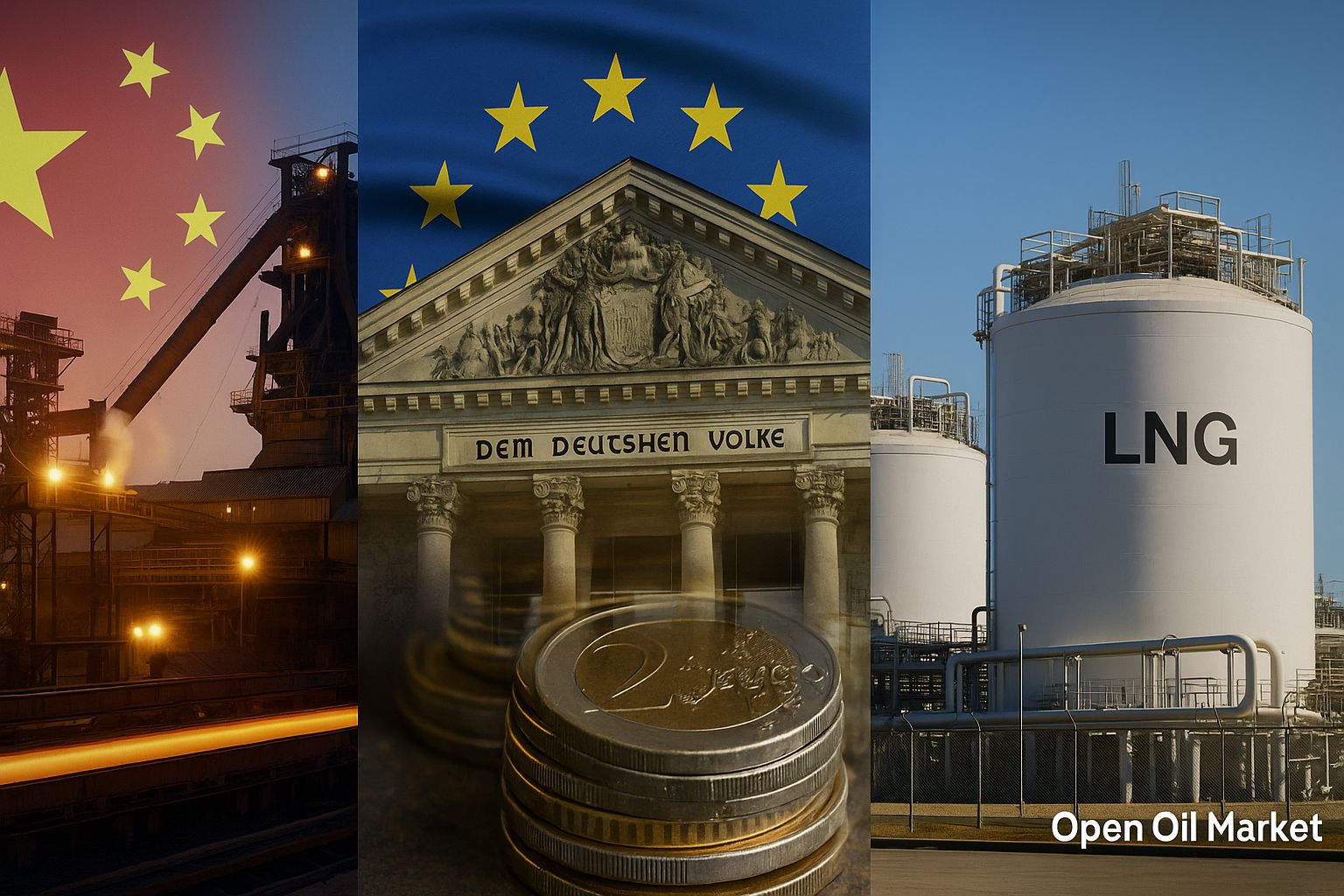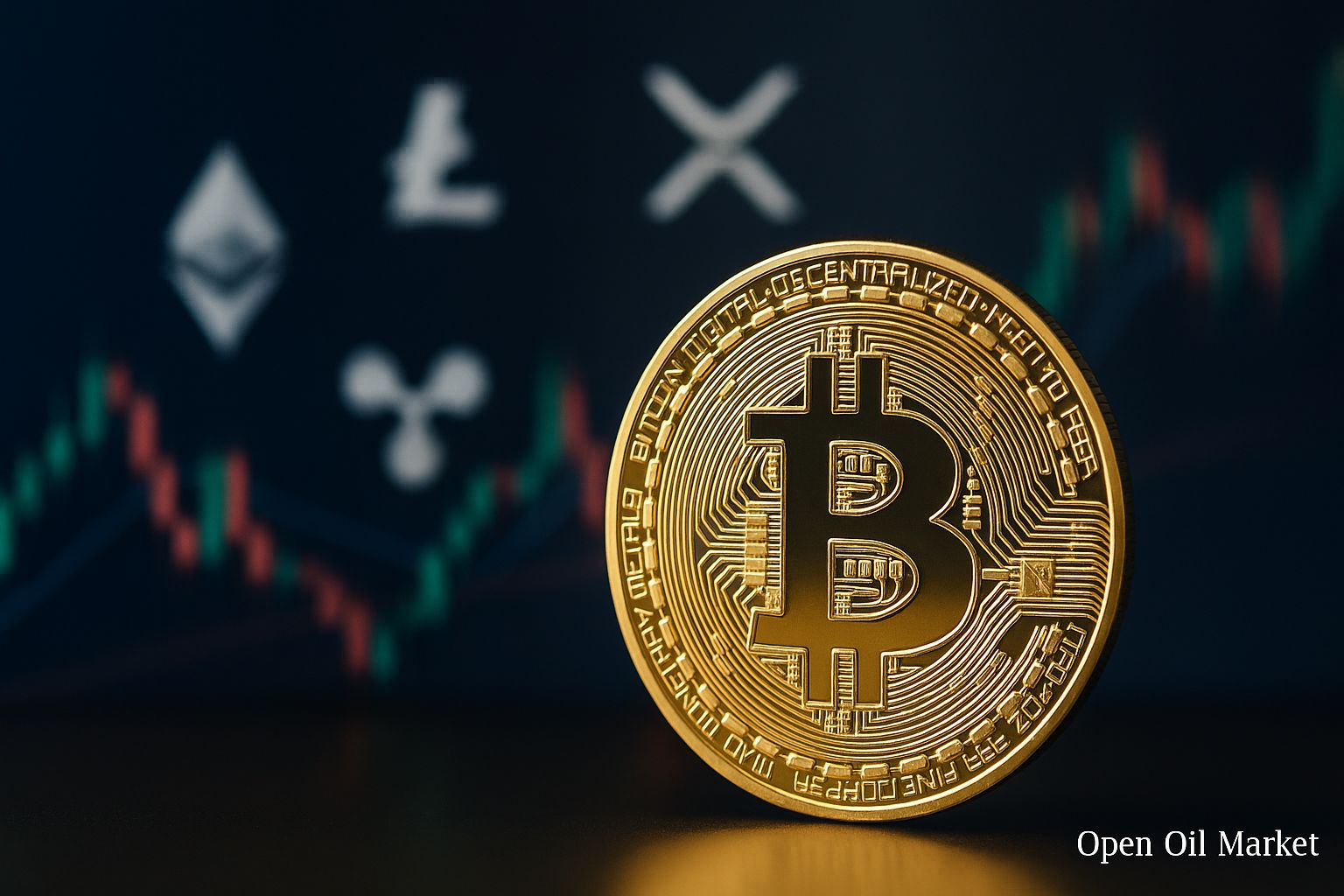
Key Economic Events and Corporate Reports for Saturday, 8 November 2025: Inflation in China, US Government Shutdown, Conclusion of Earnings Season, and Impact of Macroeconomic Data on Global Markets.
The Saturday agenda is relatively calm, yet investors are closely monitoring the release of key indicators and the week's outcomes. The focus is on inflation in China, the data for which will be released over the weekend and could influence commodity markets and sentiments at the start of the next trading week. In the US, the government shutdown continues, resulting in the cancellation of important economic report releases (such as Non-Farm Payrolls), heightening uncertainty regarding the status of the world's largest economy. Despite this, global equity markets remain optimistic due to the recent reduction in the Fed's interest rate and the outcomes of the earnings season: most companies from the S&P 500 and Euro Stoxx 50 indices have reported their third-quarter results, creating an overall positive trend in the markets. On the Russian market, investors are assessing the fresh results from issuers and dividend decisions, while the rouble demonstrates relative stability. In such an environment, it is important to pay attention to macroeconomic signals during the weekend and prepare for the start of a new week.
Macroeconomic Calendar (MSK)
- 04:30 (Sun) — China: Consumer Price Index (CPI) and Producer Price Index (PPI) for October.
Inflation in China: Expectations and Implications
- The growth rate of prices in China remains subdued: around 0% year-on-year for CPI is expected, nearing deflation. Sustained low inflation indicates weak domestic demand and may push Chinese authorities towards additional stimulus to support the economy.
- The Producer Price Index (PPI) is likely to remain in negative territory, reflecting declining prices for industrial goods. The fall in producer prices is linked both to a high base from last year and moderate global demand for Chinese industrial output.
- Inflation data from China is crucial for commodity markets and emerging countries: continued deflationary trends may pressure metal and energy prices, while any signs of reviving price pressures will bolster currencies and equities of China’s trading partners. Investors will consider these indicators when formulating strategies for the new week.
Oil and Commodity Markets
- Oil: Brent crude prices are holding steady in the mid-$60 range per barrel following a recent decline. The market is under increased pressure from OPEC+'s decision to raise production – a move that has stabilised the fuel market but resulted in Urals and Brent prices dropping to multi-month lows. Additionally, concerns over a slowing global economy and weak inflation in China are limiting price growth, although potential geopolitical risks continue to support a price premium.
- Precious Metals: Gold is trading near record levels (approximately $3400 per ounce) amid heightened uncertainty and expectations of monetary easing. Investors are using precious metals as a safe haven asset given the US shutdown and weak macro data. Silver is showing a similar trend, hovering around $38 per ounce, with price fluctuations intensifying amid changes in inflation expectations and bond yields.
- Industrial Metals: Copper, nickel, and aluminium markets are reacting to news from China. Weak PPI and signs of reduced industrial activity are putting pressure on metal prices: copper is fluctuating around $4.50 per pound, reflecting a balance between supply shortages and declining demand. Prices for nickel and aluminium have fallen more than 1% over the week, indicating expectations of a supply glut amid moderate consumption. Any stimulus measures from Beijing or improvements in statistics could reverse this trend.
Major Corporate Reports
- Palantir Technologies (PLTR) – an American developer of big data and artificial intelligence solutions. The third-quarter report reflected steady revenue growth driven by commercial demand for the AIP (Artificial Intelligence Platform). The company increased its profit and margin; however, its market capitalisation remains a topic of discussion: after significant stock increases, investors are evaluating the sustainability of current multiples amid a slowdown in government contracts and the need to maintain high growth rates.
- Advanced Micro Devices (AMD) – a US semiconductor giant actively gaining momentum in the AI chip segment. The latest quarterly report demonstrated double-digit revenue growth (+30% year-on-year) and a sharp increase in net profit, driven by record orders from cloud providers. A partnership with OpenAI (an agreement for the supply of 6 GW of GPU capacity in exchange for warrants) confirmed AMD's ambitions to compete with market leader NVIDIA. Investors are positively assessing such strategic deals but are closely monitoring margin dynamics and contract execution.
- AstraZeneca (AZN) – one of Europe’s largest pharmaceutical companies. In the third quarter, this British-Swedish company continued to enhance revenue across all key segments – oncology, cardiology, and rare diseases all show sales growth. AstraZeneca is investing significant resources to expand its drug portfolio (over 20 projects in late-stage clinical trials), laying the groundwork for future growth. Shareholders appreciate the balance between innovation and stability: the company offers stable dividends (~2% per annum), which is above the market average, maintaining its appeal for long-term investors.
- Samsung Electronics – the flagship of the Asian technology sector and a barometer of global electronics demand. The quarterly report from the South Korean corporation indicates the beginning of recovery in the semiconductor division: an increase in orders for memory chips and components for AI servers has improved profitability following last year's downturn. Meanwhile, Samsung's mobile business maintains steady sales of flagship smartphones, despite increasing competition in the segment. Investors expect that the company's diversification (from consumer electronics to chips) will help retain its leading position and benefit from the global trend towards AI development.
- FosAgro (MOEX: PHOR) – one of the largest fertiliser producers in the world and a representative of the Russian market. The company published its financial results for the first nine months of 2025: despite the volatility in fertiliser prices, FosAgro increased production by approximately 4% year-on-year and maintained stable profitability. A weak rouble and steady demand for phosphate fertilisers supported export revenue, although sanctions and logistical constraints remain a primary concern. Investors on the Russian market have responded positively to the company's results, anticipating continued generous dividend payments by year-end.
Other Regions and Indices: S&P 500, Euro Stoxx 50, Nikkei 225, MOEX
- Euro Stoxx 50: In Europe, the quarterly earnings season is nearing its conclusion – the vast majority of companies in the Euro Stoxx 50 have already reported. The absence of new major releases means that markets are switching their focus to macroeconomic factors. Next week, GDP figures for the UK and eurozone are expected, which will help assess recession risks amid high but slowing inflation. European indices ended the week on a high, reaping the positive effects of central banks’ easing, and their performance will now depend on upcoming economic data and ECB signals.
- Nikkei 225 / Japan: In Japan, the release of results for the first half of the 2025 financial year continues. Major manufacturing groups and technology companies (automakers, electronics firms) are generally pleasing investors with improved earnings driven by a weak yen and recovering external demand. The Nikkei 225 index hit multi-year highs this week, supported by strong corporate earnings and the Bank of Japan's continued accommodative monetary policy. Nevertheless, further yen strengthening or global risks could temper this rise, hence the Japanese market is responding sensitively to external signals.
- MOEX / Russia: The Russian stock market finished the week on a steady rise: the Moscow Exchange index surpassed 2570 points amid capital inflow into blue-chip stocks. Investors reacted positively to local factors – in particular, the board of directors of Rosneft approved recommendations for interim dividends for the first nine months, bolstering interest in the oil and gas sector. Additionally, the stability of the rouble (around 80–82 RUB per US dollar) and moderate inflation in Russia reinforce the attractiveness of rouble-denominated assets. In the coming weeks, market participants are awaiting remaining corporate reports and monitoring potential actions from the Central Bank of Russia, given the decline in inflationary pressures.
Day's Summary: Key Investor Considerations
- **1)** Data from China: The publication of Chinese CPI/PPI indices over the weekend will serve as the first indicator for markets ahead of Monday. Any surprises – for example, a deepening deflation or unexpected inflation acceleration – could impact commodity prices (oil, metals) and set the tone for trading in Asia. Investors should be prepared for reactions to these figures, particularly those companies reliant on Chinese demand.
- **2)** Shutdown in the US: The halt in US government operations has led to an unprecedented pause in official statistics. The absence of the labour market report for October and the potential deferral of CPI data publication increases uncertainty concerning the Federal Reserve's future policy. It is crucial for investors to monitor alternative indicators (private employment estimates, consumer surveys) and news regarding budget negotiations in Washington – any progress towards restoring government operations may sharply influence Treasury yields, the dollar exchange rate, and global market sentiment.
- **3)** Oil Prices and Energy Market: Following OPEC+'s decision to increase production quotas, oil prices remain under pressure. Energy sector investors should pay attention to OPEC+'s further rhetoric, oil stock statistics, and news from major producing regions. Increased price volatility is possible, consequently affecting the shares of oil and gas companies and high-yield bonds from emerging markets.
- **4)** Corporate Guidance: Although the peak of the earnings season has passed, the impact of corporate news persists. Forecasts and comments from management at several technology giants (semiconductors, AI) and consumer companies will shape sentiment in specific sectors. Attention should also be given to updated holiday sales forecasts from retailers and order dynamics in industry – these leading indicators may redirect investors’ focus from macroeconomic risks to particular growth stories within sectors.
- **5)** Risk Management Over the Weekend: Given high levels of stock indices and uncertainty (shutdown, geopolitics, data from China), investors are advised to exercise caution. Ahead of the new trading week, it is beneficial to reassess stop-loss levels on key positions, evaluate the need for hedging (for example, via gold or options), and prepare for potential price gaps at Monday's market opening. A considered action plan will help approach the new week well-prepared, regardless of how events unfold.
Markets as of 8 November 2025: Cryptocurrencies, Commodities, and Currencies
Cryptocurrencies: Bitcoin (BTC/USD) corrected by -2.1% on Friday, dropping to $125,300, losing around $2,700 over the day. After reaching multi-month highs above $128,000 last week, the largest cryptocurrency encountered profit-taking. Ethereum and other altcoins are also largely in the red, reflecting decreased risk appetite over the weekend.
Stock Indices and Futures:
- Shanghai Composite: 3,715.8 (+0.4%)
- Hang Seng Futures: 25,100 (+0.8%)
- Nikkei 225 Futures: 43,850 (+1.2%)
- Euro Stoxx 50 Futures: 5,410 (+0.3%)
- S&P 500 Futures: 6,450.5 (+0.1%)
Commodity Prices:
- Brent Oil: $67.20/barrel (+0.5%)
- Natural Gas (HH): $3.01/MMBtu (-0.3%)
- Gold: $3,389.50/ounce (-0.3%)
- Silver: $37.80/ounce (+0.2%)
- Copper: $4.47/pound (+0.4%)
- Nickel: $13,200/tonne (-1.0%)
- Aluminium: $2,560/tonne (-0.9%)
Foreign Exchange Market (Forex):
- EUR/USD: 1.1625 (+0.1%)
- USD/RUB: 81.23 ₽ (-0.2%)




